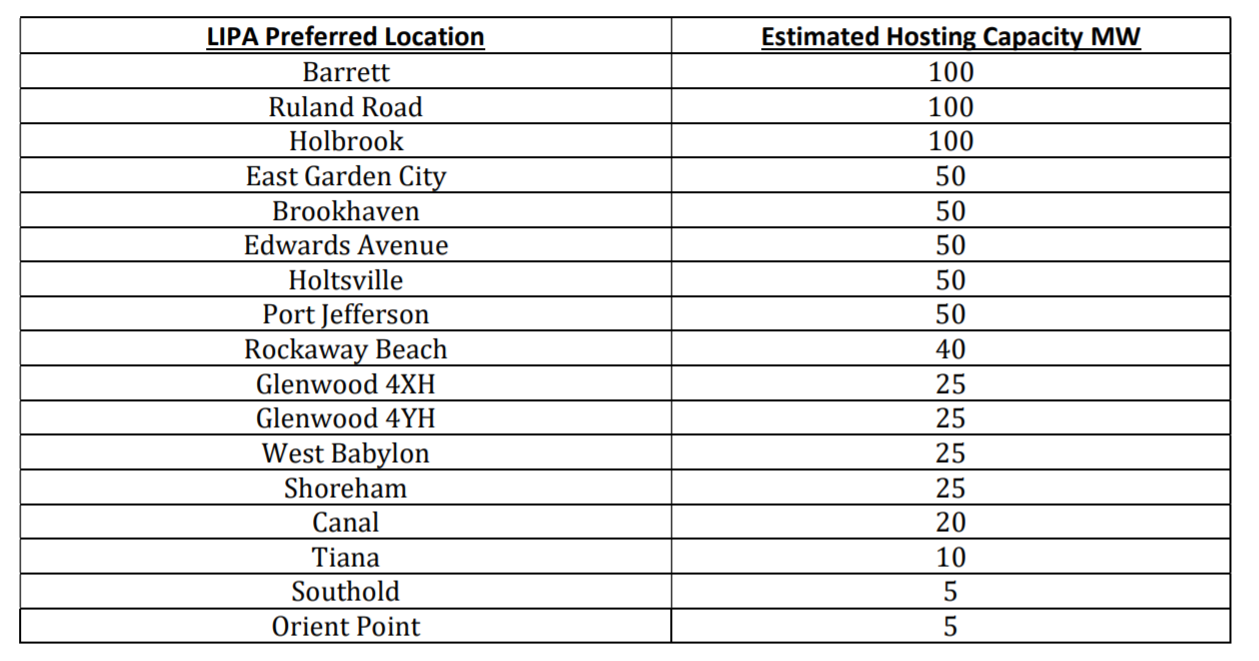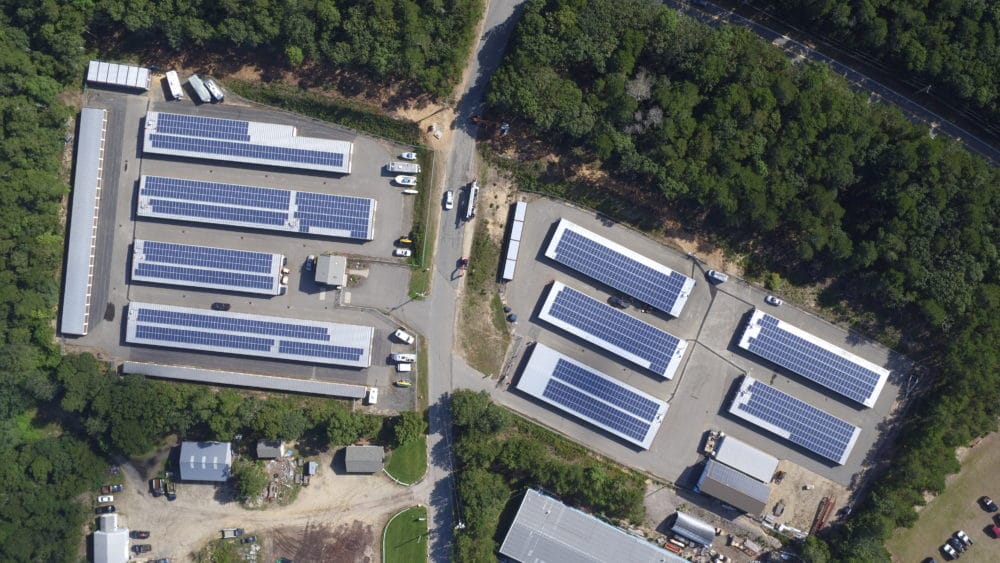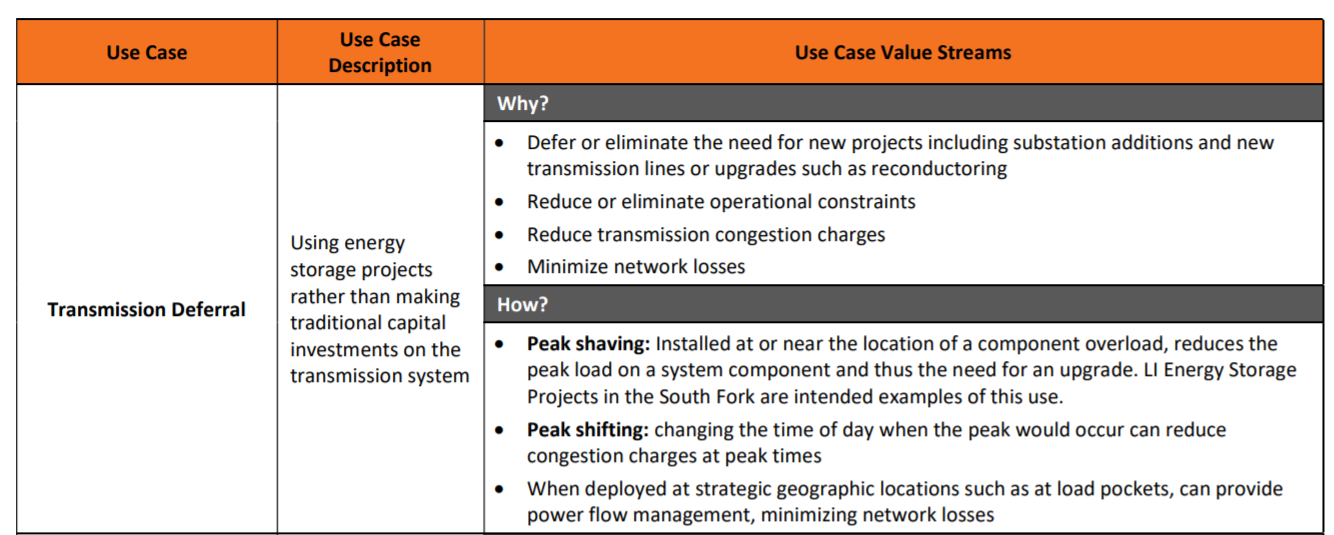Long Island’s electric utility PSEG has published a Request for Information seeking “ideas, suggestions, and concepts on how best to configure, deploy and locate” between 155-175 MW of energy storage with at least four hours of capacity. The document is also designed to give the developer a chance to introduce themselves to the utility for future business opportunities.
Quoted on Renews, Paul Napoli, Vice President of Power Markets for PSEG Long Island said, “Energy storage, strategically located across our service area, will be used to enhance reliability and help to provide a greener future for all Long Islanders.”
Fourteen unique information requests were posed, with a few below:
- Specific details of the energy storage products or services to be procured
- Respondents’ experience with developing and financing energy storage projects
- Respondents’ preferences for alternative contract structures and contract terms
- The appropriate structure for improving market certainty to promote bulk energy storage development on Long Island
- Respondents’ interest in developing a project on LIPA-owned property with a property lease arrangement
- Any additional locations and/or use cases for energy storage projects that would interconnect to the T&D System that are not listed in Appendices B and C below that would provide value to LIPA’s customers
The utility submitted a list of preferred substation locations and potential capacities that go far beyond the RFI’s noted volume of 155-175 MW.

Comprehensive studies are required to assess interconnection feasibility and MW values including, but not limited to, charging limitations, load-curve analysis, thermal impact on underground cables, resource deactivations, resource interconnections, performance requirements, field surveys, constructibility, engineering design, property rights/easements, and environmental restrictions.
The utility is considering suggesting these technical requirements:
-
- Minimum MW size of 5 MW at one location for an energy storage project
- Capability to operate at least 350 cycles per year, limited to one cycle per day
- Capability to operate for at least four hours in duration
- Maintain 98% availability for dispatch in each calendar year
- Average state of charge of 50-80%
- Must be at 100% usable state of charge approximately x4 days/year for a given period
- Must maintain a dispatchable capacity rating at least equal to the offer’s guaranteed capacity over the term of the contract
As well, on pages 11-12 of the document, potential use cases are noted: transmission deferral, distribution deferral/demand response, energy & capacity, wind integration associated performance, ancillary services, and microgrid applications.
The RFI notes that New York state has set a 70% renewable electricity target for 2030, with a 100% carbon free grid by 2040. Included is a 3,000 MW 2030 energy storage goal, with 1,500 MW due by 2025. PSEG says its share of the 2025 goal is approximately a 200 MW. The volume in this RFI would go toward meeting that 200 MW goal.
How to apply these uses to Commercial and Industrial Energy Customers, searching for savings
If your commercial customer has a large enough facility, and they don’t mind the complexity of being involved with an RFP of this size, there is an opportunity.
First, I would suggest the customer have a potential demand charge savings. Second, a decent sized solar installation opportunity. Next, a nice chunk of space for multiple shipping containers. The RFP is going to offer some sort of financial benefit for the energy storage in those containers.. This will allow for leasing of space, and this cost can be used to lower the price the customer pays for the solar+storage system.
A distributed residential network of solar+storage from someone like Sunrun would also mix in here well. Individual residential units without a centrally managed control system wouldn’t work.
Related Commercial Solar Guy Projects
A customer of ours in New Bedford, Massachusetts would probably fit into a program like this. They have two solar power systems installed. Their electricity bill savings from the solar is great. However, the demand charge and fixed monthly billing amount as a result of their tariff schedules touches five digits in the winter time.
Commercial Solar Guy has recently requested updated interval data from the electric utility Eversource. This interval data will let us learn what the company’s demand charge curve looks like after the solar power has been running for 18 months and lighting upgrades have had a few months to get into the electricity bills.
We’ll first discover if there’s any low hanging demand charge fruit – like the air conditioners for two hours in the early afternoon, or big machines as they warm up first thing in the morning. Next we’ll look at the tariff schedules as compared to their current schedule, to discover if there are strategic sizings to drive further bill savings. As well, we’ll do some reading about the pending Clean Peak Standard and its associated energy storage deployment goals to see if we’d fit there.
Additionally, we’re working with Raine Scott at Extensible Energy (of course introduced to me by solar celebrity Tor). Their proposal is that we ought consider a demand response software solution. The short version is that they connect a computer to the various demand charge creating hardware in the structure, giving them control to turn things up and down. They then cross that control with the site’s overall instantaneous demand measurement – driving savings.
Multiple year relationships with this business owner have led to our current work. A maturing energy storage industry is giving us an opportunity. State incentives are lining up. I suspect we’ll be offering this company a strong energy savings solution within the next month. If you’d like to learn more about our work at Commercial Solar Guy, or ask about a potential project, you can contact us to set up a call.


